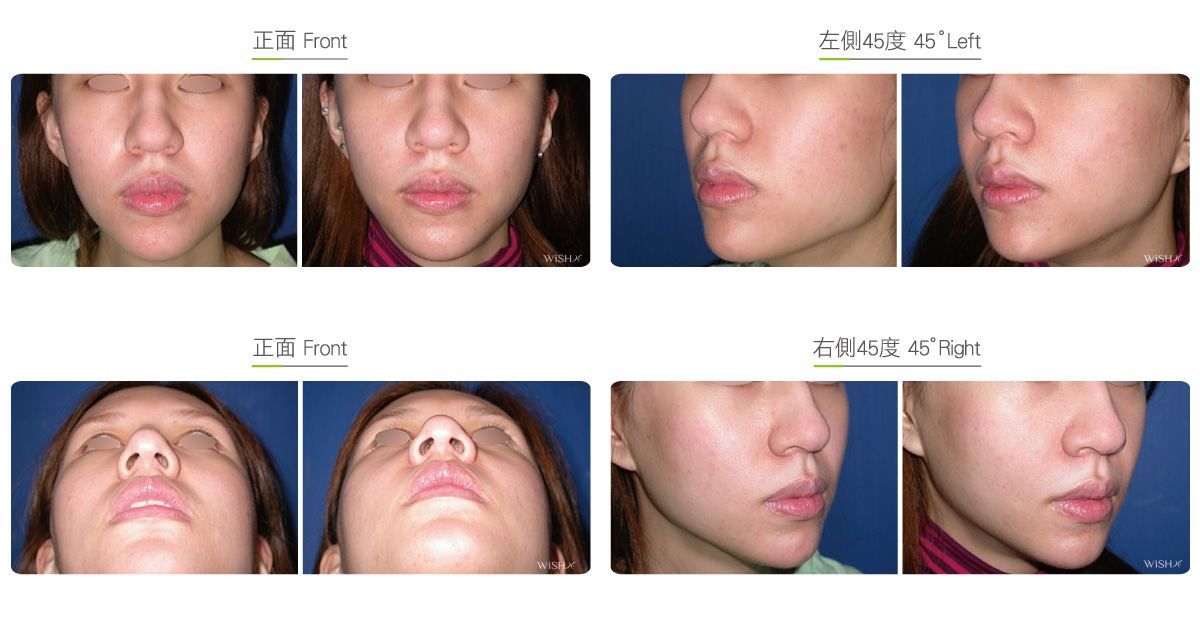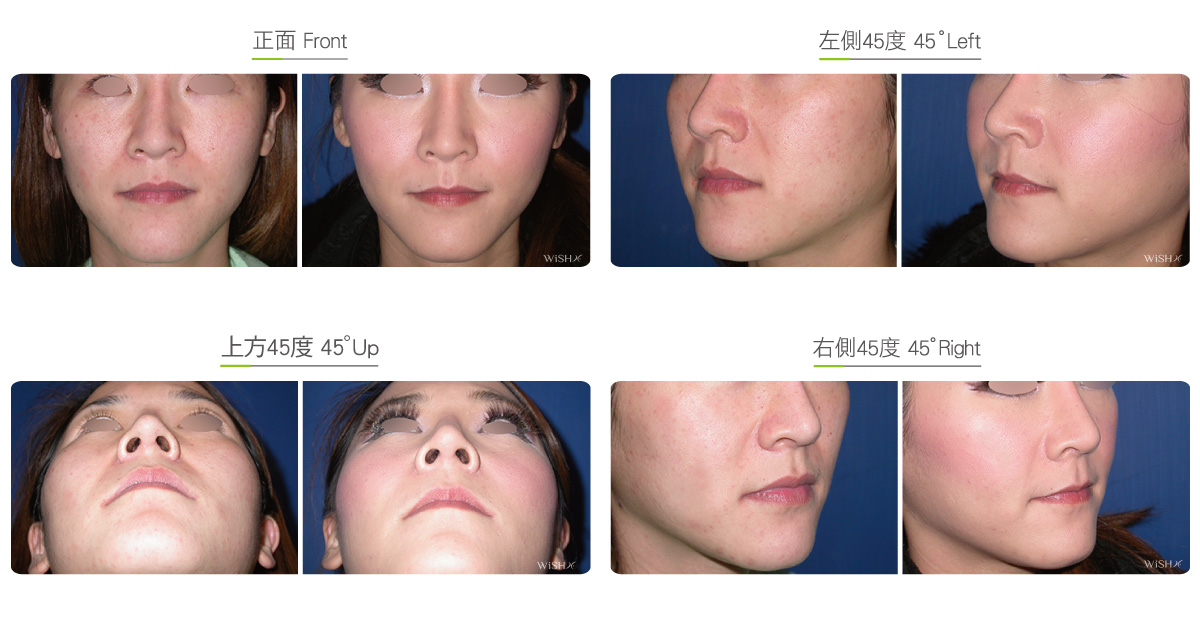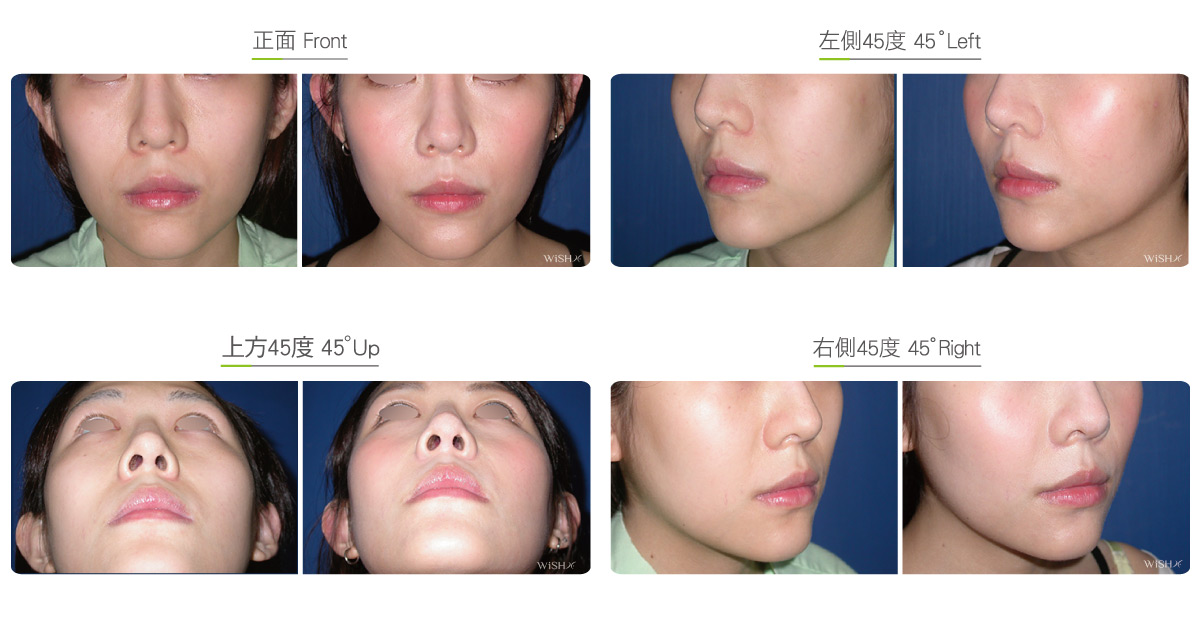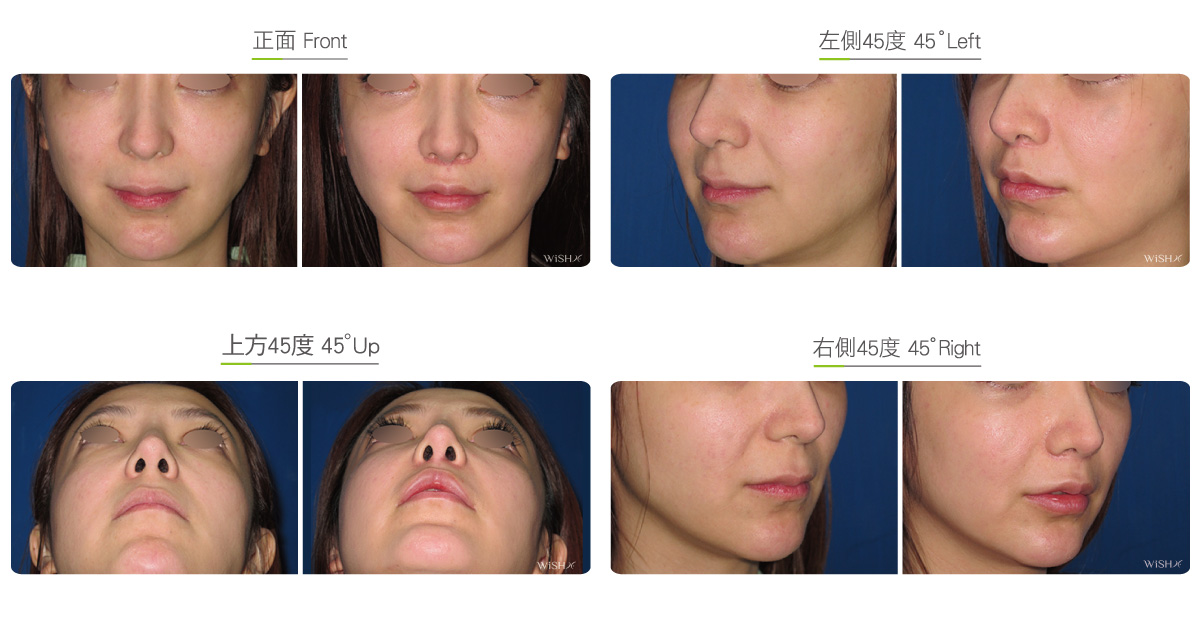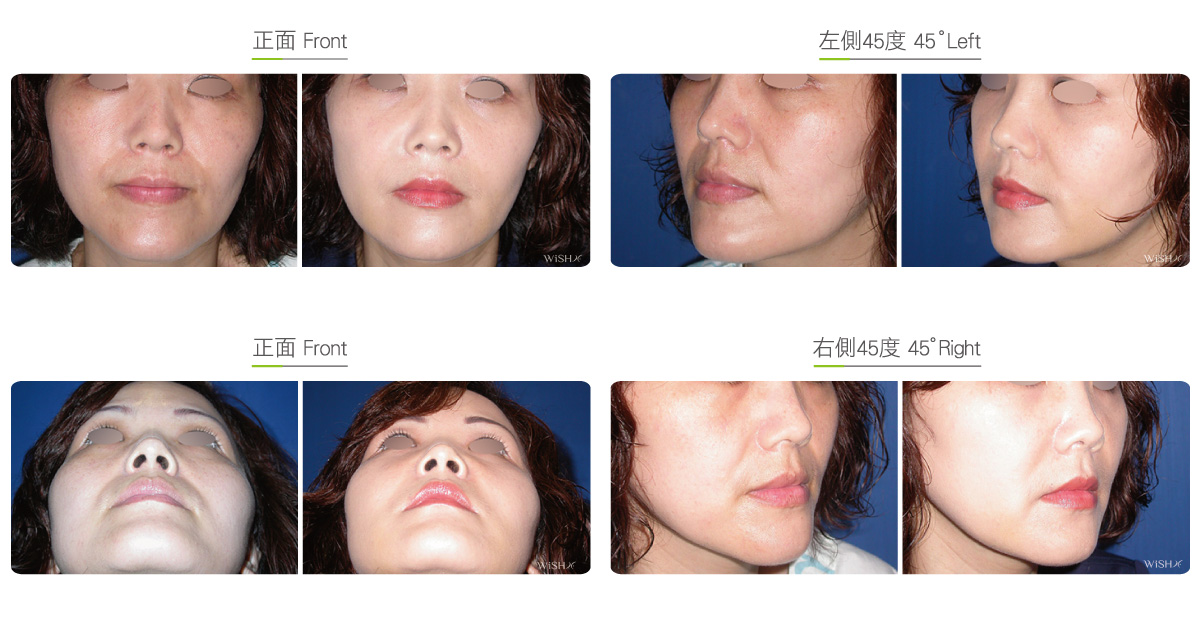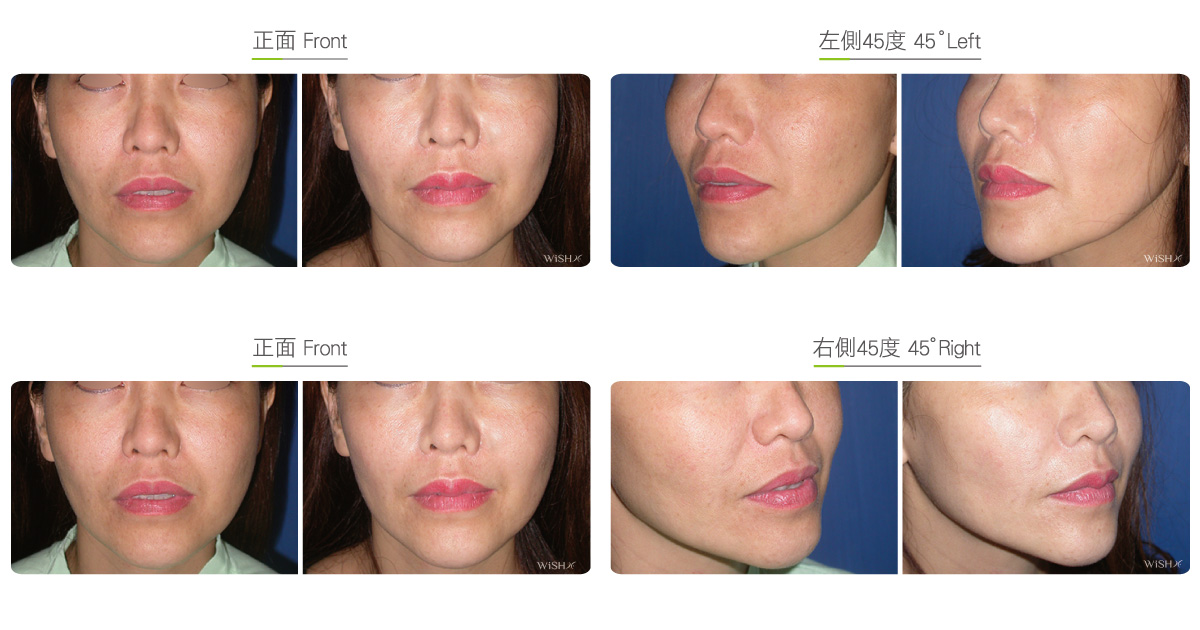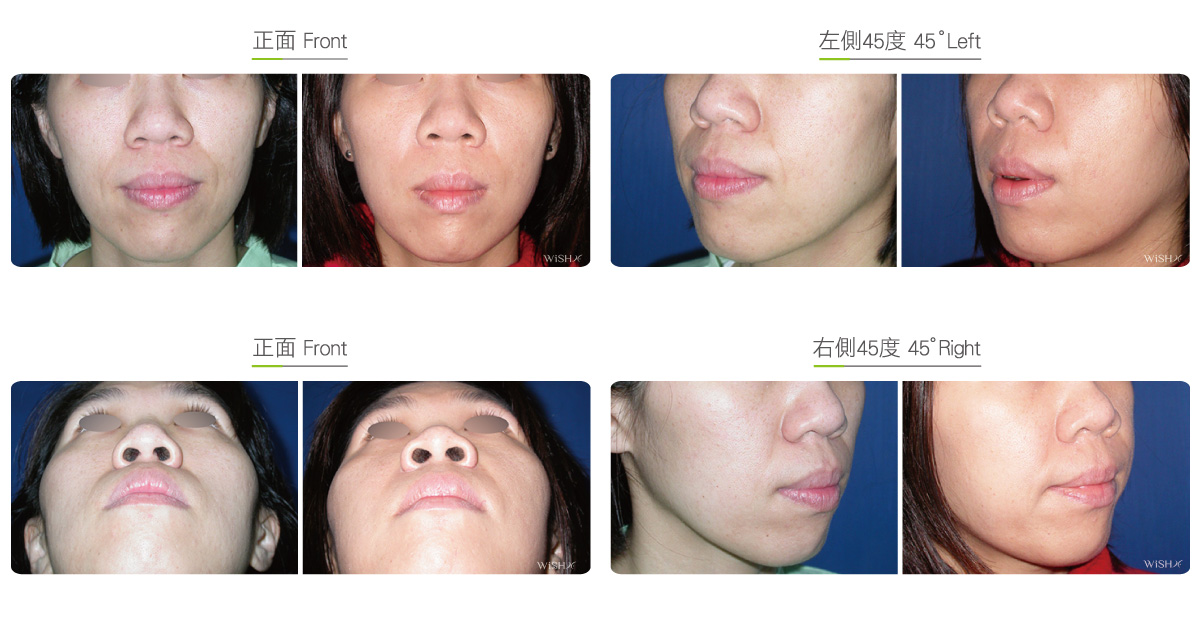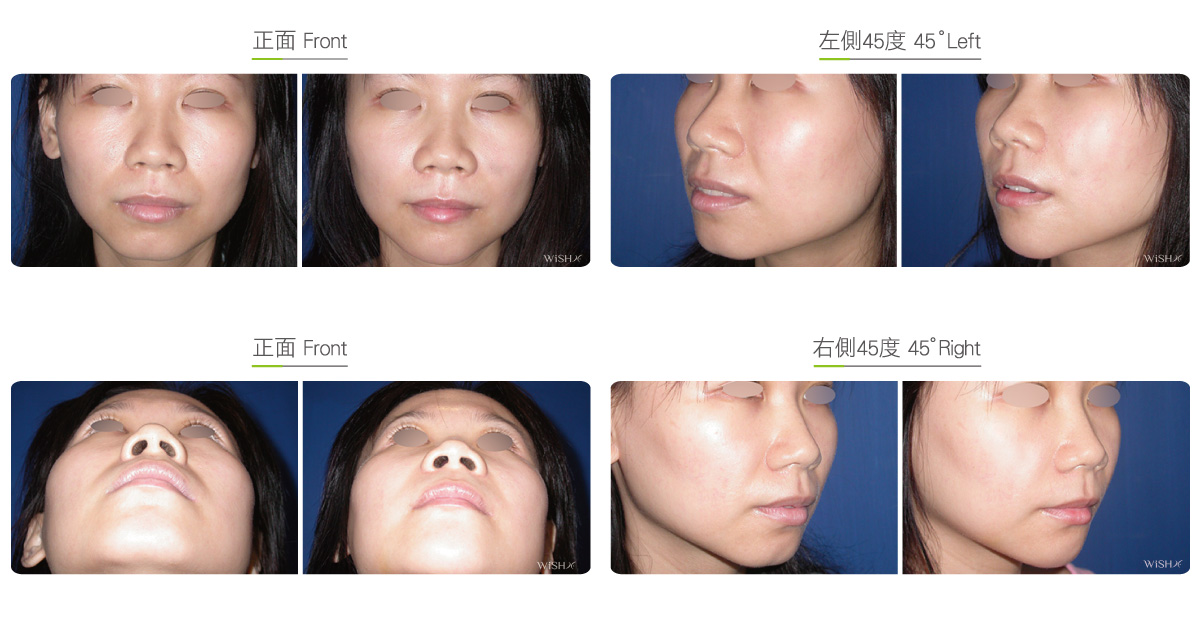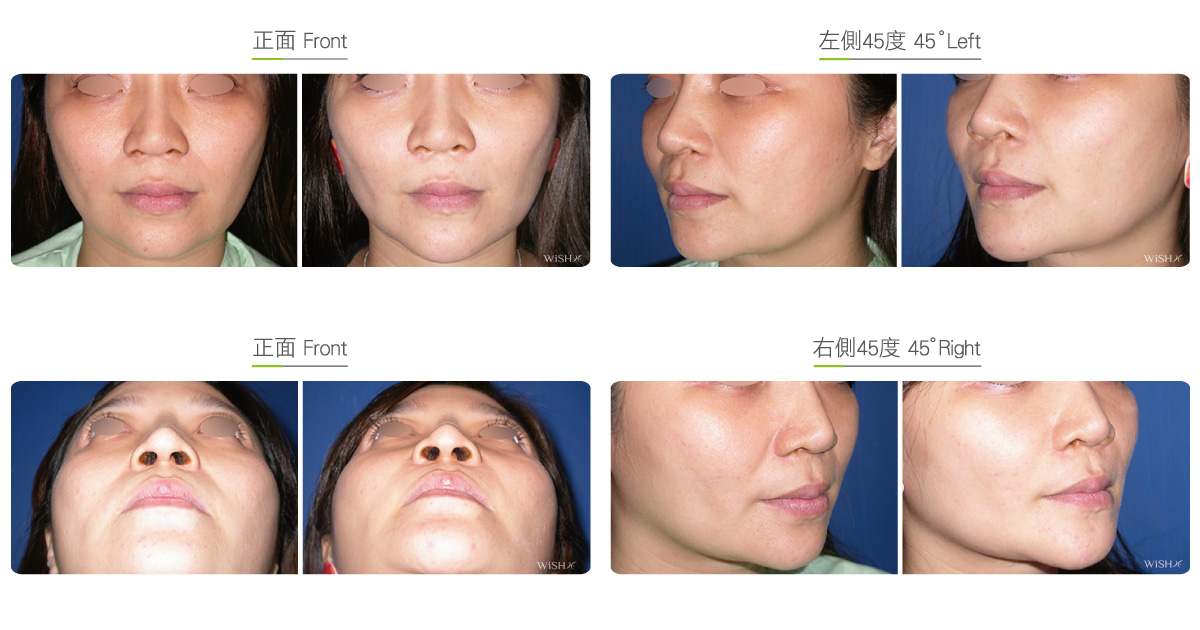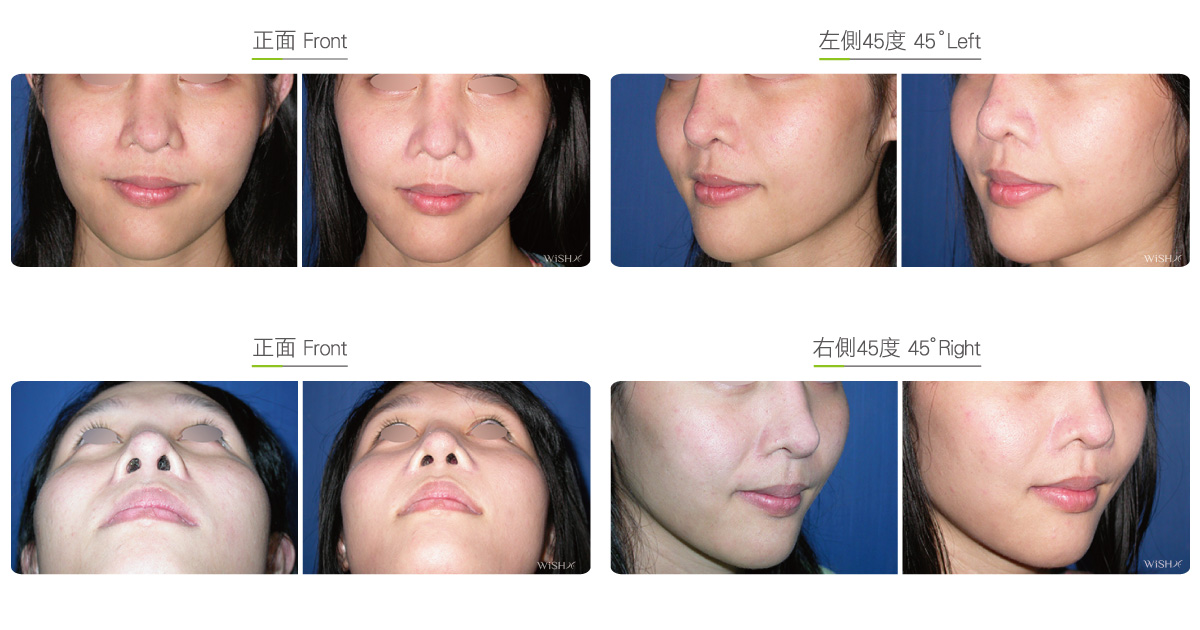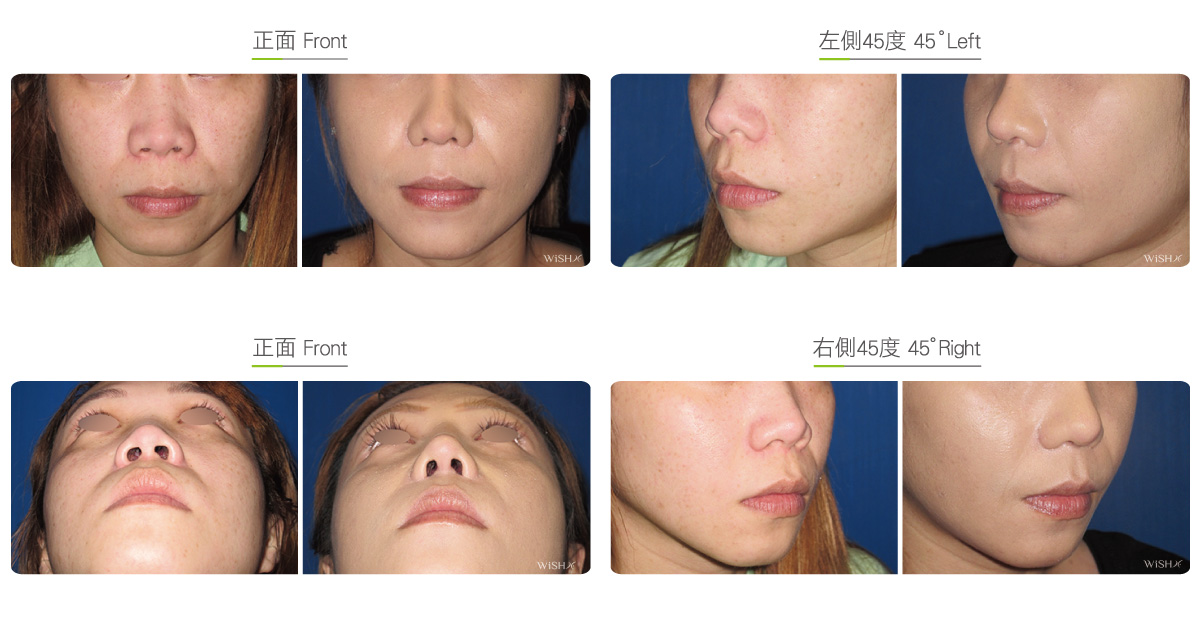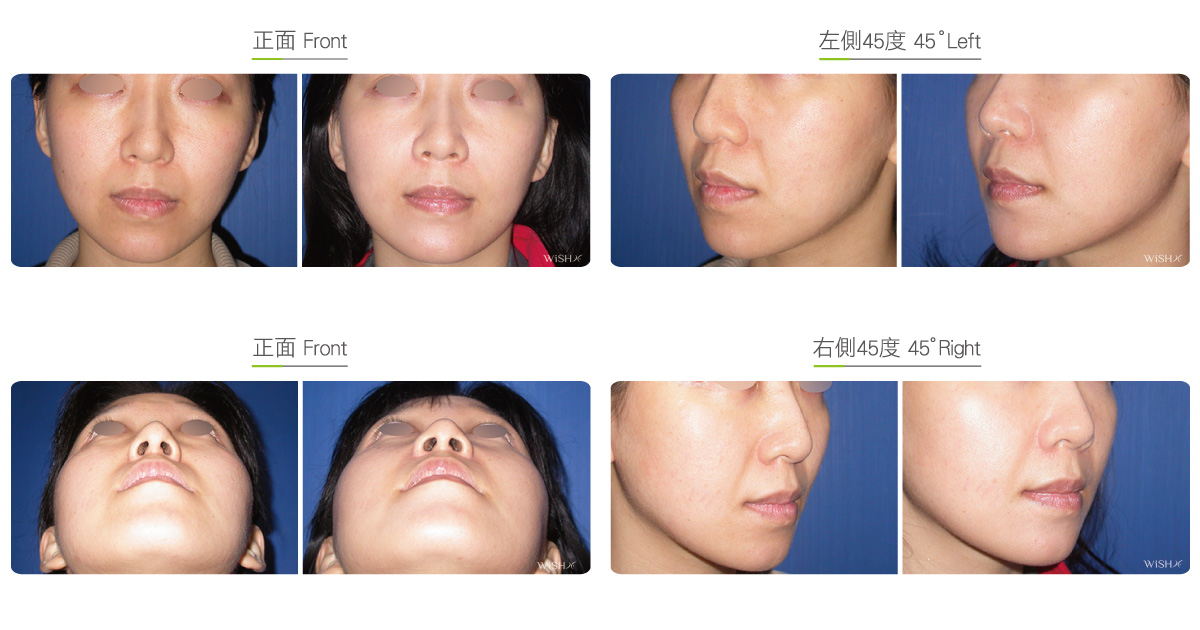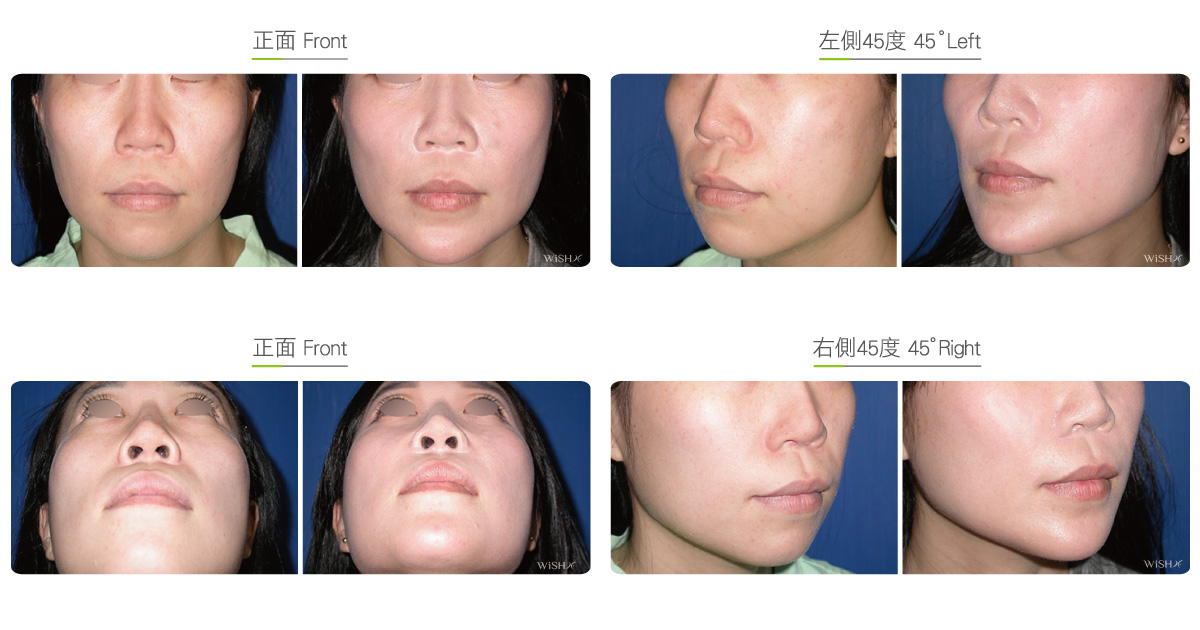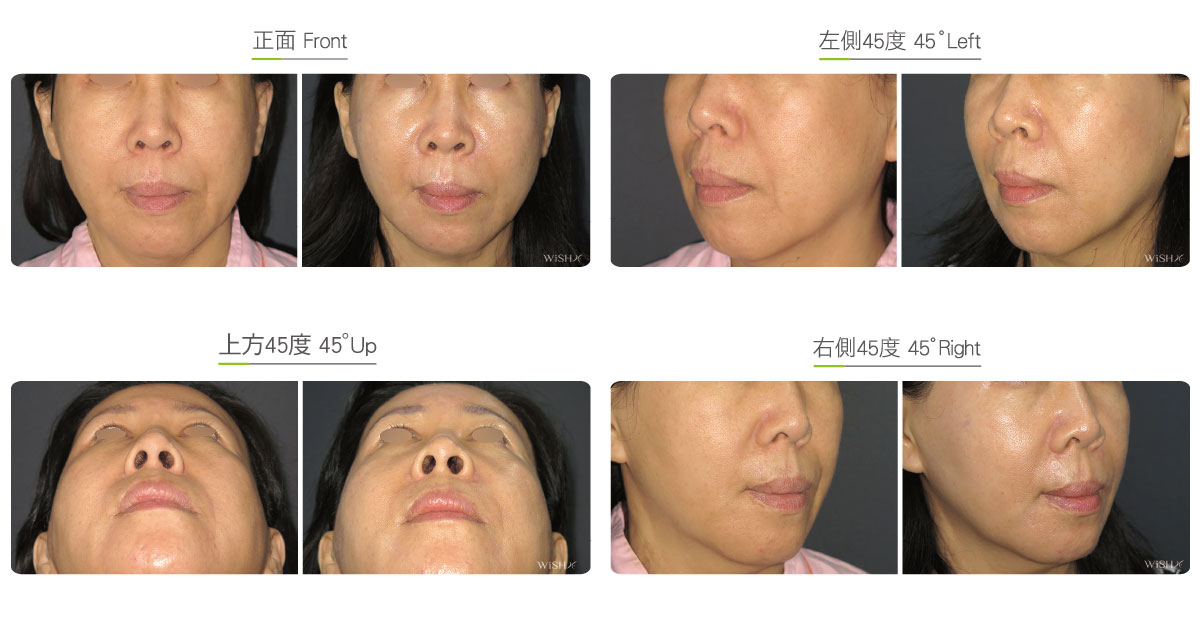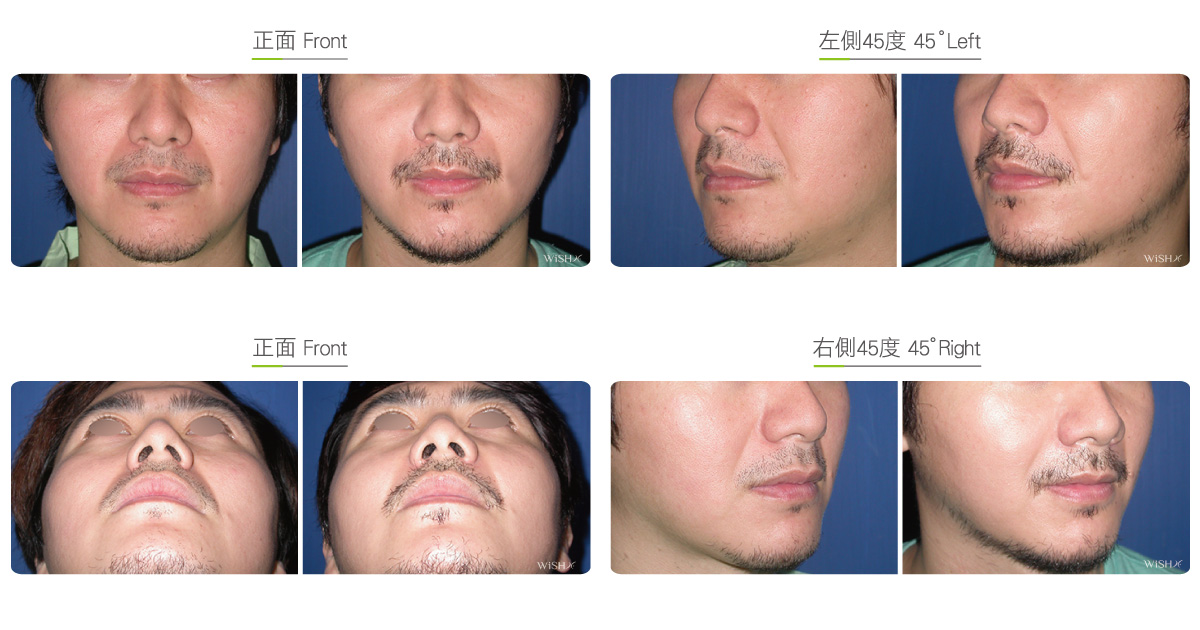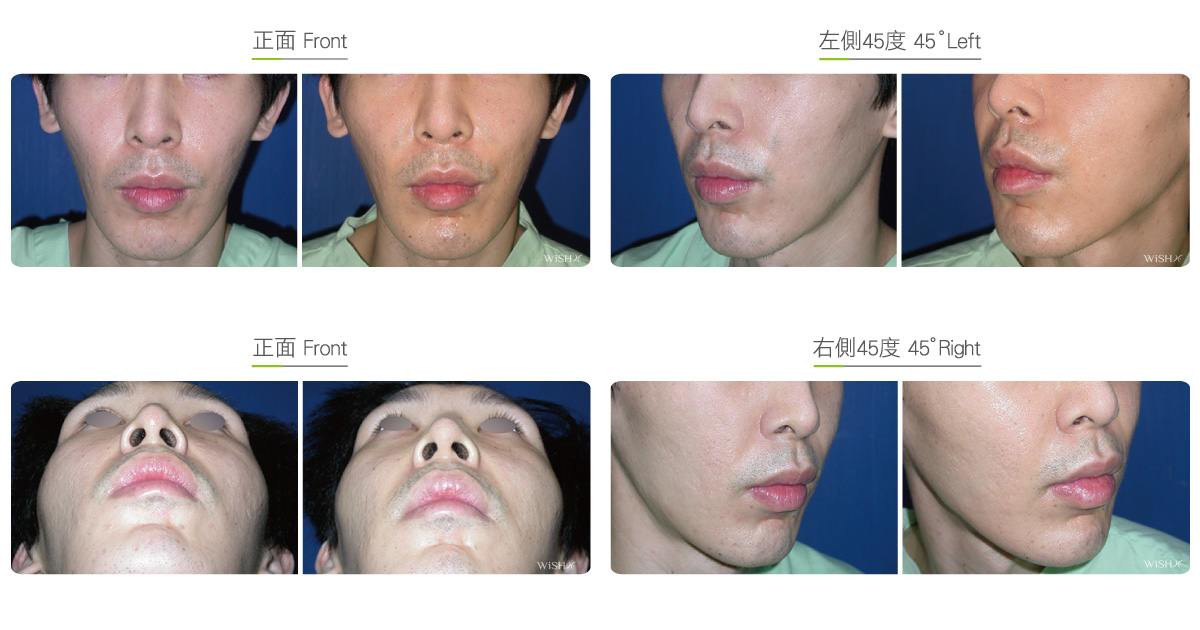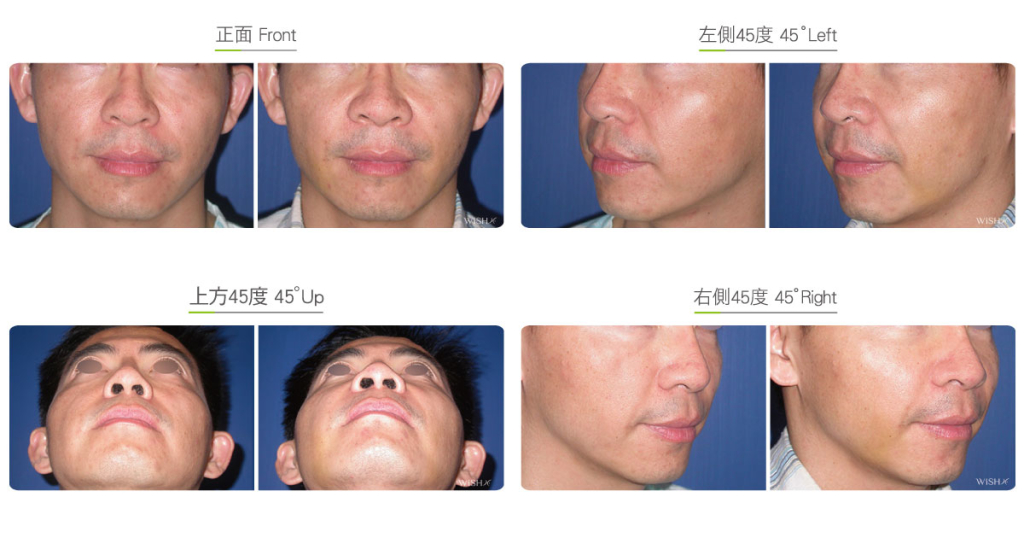Paranasal Implants
Prosthesis implantation is the fundamental method to redress skeletal nasolabial groove depression, with an improvement of up to 70–80% on average. The materials frequently used by Dr. Chuang are Medpor and Gore-Tex; common mild depressions can be corrected by Gore-Tex, and wide and deep paranasal depressions can be filled by the tough and thick Medpor, the results of which are also relatively distinct. By either of these materials, the procedures involve making a 1.5-cm incision at the superior area of the alveoli, limited detaching the skin adjacent to the paranasal depression from the skeleton via the incision, emplacing the sculpted Gore-Tex to the subperiosteal space, and adhering to the bone depression, which can be fully fixated after 1 month. In case of Medpor emplacement, besides cutting and sculpting to the appropriate size and shape, it should be fixate at the affected site by titanium bone screws to prevent future dislocation, so the recovery period is shorter than that of obtained by a Gore-Tex implant. Generally it takes approximately 1 week to become stable.
This surgery mainly corrects the structural (osseous) nasolabial groove depression. However, if patients have concurrent skin looseness and other problems of aging nasolabial folds, auxiliary injections such as hyaluronic acid injections, autologous fats grafting, or even temporal midface lift are indicated to achieve comprehensive improvement.
Surgical conditions
Duration
- Type of anesthesia: IV sedation + local anesthesia
- Type of incision: An approximately 1.5-cm incision at both sides of the intraoral upper gingiva
- Recovery: 7–10 days
- Removal of stitches: No
General instructions
No food and water on the day of surgery
- Try to avoid talking too much or frequent eating for 1 week postoperatively.
- Avoid smoking, alcohol, and irritating foods for 1 month postoperatively, and avoid strenuous or excessive activities.
- Avoid singing or laughing and other overt mouth opening behaviors for 2 months postoperatively.
- Avoid heavy massage to or squeezing of the face for 3 months postoperatively.
Ideal candidates
- Patients with congenital (osseous) nasolabial groove depression
- Those with snaggletooth and a concurrent sunken midface (midface bone deficiency)
- Those with a severe or broad paranasal depression
- Those with a distinct paranasal depression and nasolabial fold due to aging effect
- Those whose problems cannot not by solved by an injection of hyaluronic acid or autologous fats
Possible complications
- Poor wound healing
- Prosthesis dislocation
- Implant exposure
- Foreign body reaction
- Infection
Surgical advantages
-
It radically alleviates the paranasal depression and prevents nasolabial fold deepening.
-
It fills the paranasal depression from the deep plane, the results of which are natural and unnoticeable.
-
It effectively mitigates dental and palatine prominence and other skeletal nasolabial groove problems.
-
Surgical results are stable and long lasting.
-
The incision is inside the mouth, and the scar is concealed.
Surgical drawbacks
-
Complications of prosthesis implantation such as tissue reaction or dislocation (Gore-Tex) may occur.
-
Poor healing of the intraoral wound may result in the revealing or infection of the prosthesis.
-
Excessive correction may change the mouth shape or smile.
-
The upper lip may have temporary numbness or foreign body sensation.
Possible procedures in conjunction
Comparison of paranasal implants
| Gore-Tex | Medpor | |
|---|---|---|
| Ideal candidates | Patients with a mild nasolabial groove depression | Patients with a moderate and severe nasolabial groove depression or an osseous snaggletooth (mid-face bone deficiency) |
| Surgical incision | Upper gingiva | Upper gingiva |
| Anesthesia method | IV sedation + local anesthesia | IV sedation + local anesthesia |
| Material property | Relatively soft | Hard |
| Bone screw fixation | No | Yes |
| Infection risk | Low | Low |
| Dislocation probability | Low | No |
| Wound healing | Rapid | Relatively slow |
| Reversibility by removal | Simple | Relatively difficult |
| Surgical results | Permanent | Permanent |

